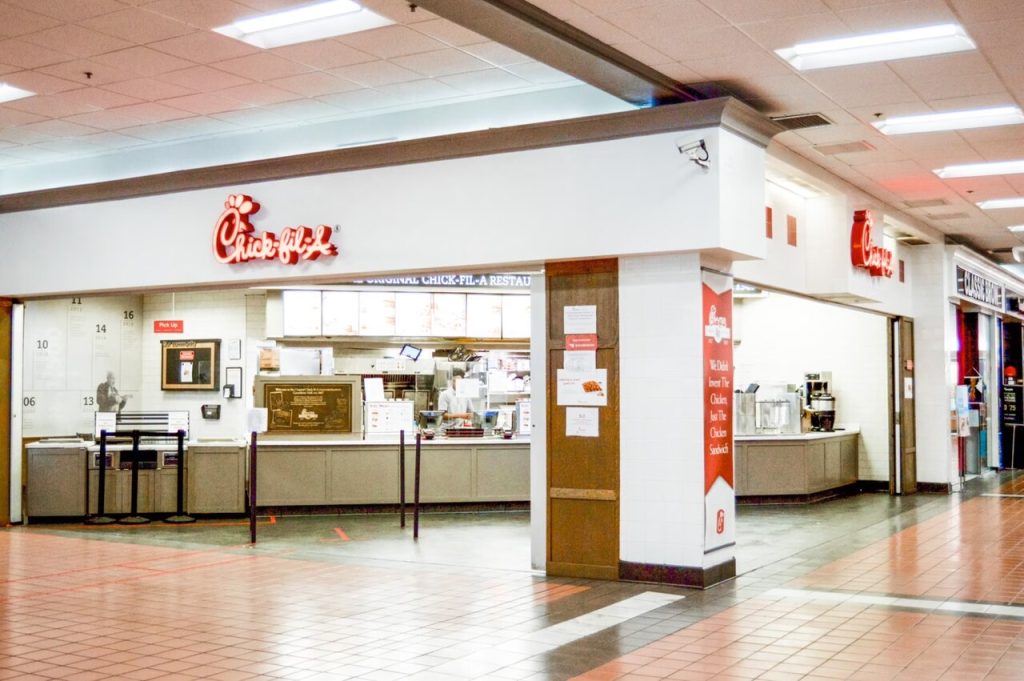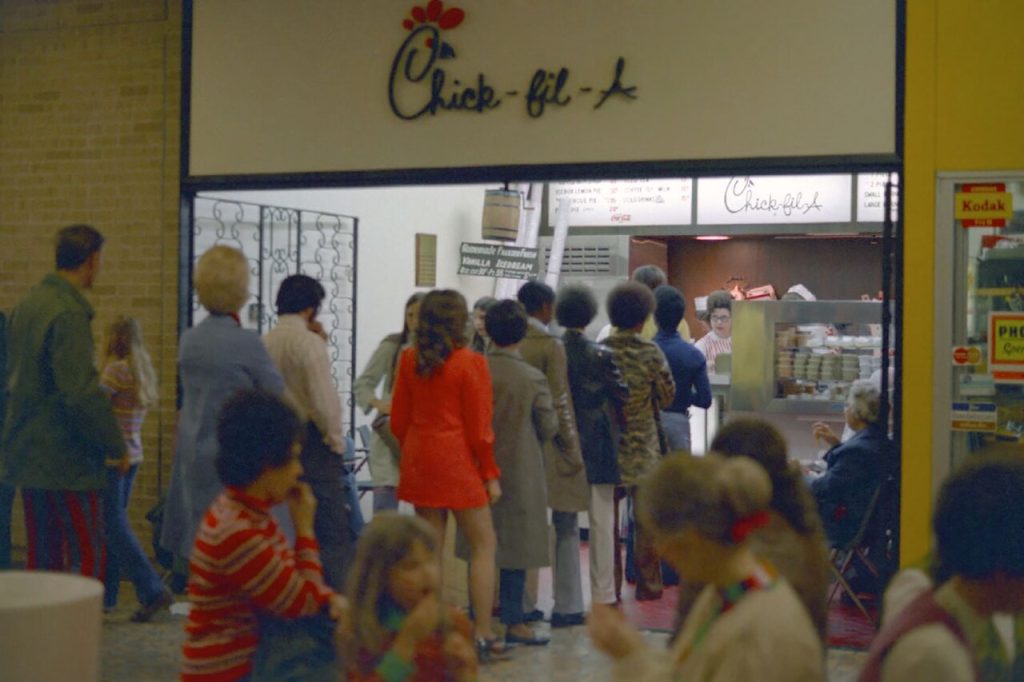In 1967, Truett Cathy opened the very first Chick-fil-A restaurant at Greenbriar Mall in Atlanta, Georgia. This modest 384-square-foot diner was groundbreaking in several ways. It was among the first fast-food establishments to be located inside a mall food court, an innovative concept at the time. What began as a small venture quickly became a beloved national brand, eventually growing into one of America’s most iconic fast-food chains with locations across 47 states and the District of Columbia.

This original Chick-fil-A location holds a special place in the company’s history. It represents the pioneering ideas that set the foundation for the chain’s remarkable success. However, as is often the case with growing businesses, the first restaurant eventually became a casualty of changing times and shifting consumer habits. The Greenbriar Mall, once a bustling hub for shoppers, saw a steady decline in visitors over the years. The loss of anchor stores and the rise of online shopping have contributed to its diminished appeal, making it difficult for businesses like Chick-fil-A to thrive in that location.
The decision to close the original Chick-fil-A restaurant is more than just the shuttering of a store; it symbolizes broader changes in the retail and dining industries. Increasingly, consumers are choosing the convenience of online shopping over visiting traditional malls, leading to a decline in foot traffic for businesses that rely on physical locations. The closure of this historic restaurant serves as a reminder of how businesses must adapt to survive in a rapidly evolving marketplace. For Chick-fil-A, this adjustment is part of a broader strategy to remain relevant in a world where consumer behaviors and preferences are constantly shifting.
While the closure of the first Chick-fil-A is bittersweet, it is also a testament to the company’s growth and ability to innovate. The original store was a stepping stone that laid the groundwork for what the brand has become today—a household name with millions of loyal fans. Its legacy will live on as a cornerstone of Chick-fil-A’s story, reminding us of the humble beginnings that inspired its meteoric rise.
The closure of Chick-fil-A’s first location is not an isolated incident. Many other iconic brands have faced similar challenges and made tough decisions to close or repurpose their original stores. Starbucks, Dunkin’ Donuts, McDonald’s, and Kentucky Fried Chicken have all adapted to changing markets by either shutting down underperforming locations or reimagining their spaces to meet modern demands. For example, some historic fast-food locations have been turned into museums, preserving their legacy while allowing the brands to focus on their current growth strategies. The original Dunkin’ Donuts in Massachusetts and the first Starbucks in Seattle are prime examples of how companies can honor their past while embracing the future.
These shifts are not just about closing stores but also about understanding and respecting the dynamic nature of business. For entrepreneurs, the story of Chick-fil-A’s first restaurant offers an important lesson: growth and innovation often require difficult decisions. While it’s crucial to remember the roots of success, businesses must also remain flexible and willing to adapt to new opportunities and challenges.

Chick-fil-A’s journey from a small diner in a mall food court to a national chain with a dedicated following is a prime example of the entrepreneurial spirit. It highlights the importance of starting small, learning from mistakes, and embracing change as a constant in the business world. As the company moves forward, the creativity and determination that fueled its early days continue to drive its growth.
For consumers, the closure of the original Chick-fil-A is a poignant reminder of the ever-changing nature of retail and dining experiences. Malls, once the epicenter of community and commerce, are now being replaced by e-commerce platforms and alternative shopping experiences. Despite these changes, brands like Chick-fil-A demonstrate that it’s possible to stay connected to their roots while evolving to meet new consumer demands.
As we bid farewell to Chick-fil-A’s first restaurant, it’s worth celebrating the legacy it leaves behind. This small diner not only launched a fast-food empire but also exemplified the power of innovative thinking and perseverance. Its story inspires both businesses and individuals to value their beginnings while staying open to the possibilities of the future.
The closure of this iconic location is not an end but a chapter in Chick-fil-A’s continuing story of growth, resilience, and success. While the Greenbriar Mall location will no longer serve customers, its impact on the company’s journey will never be forgotten. The legacy of the first Chick-fil-A serves as a reminder that even the most successful ventures start with a single, humble step.





